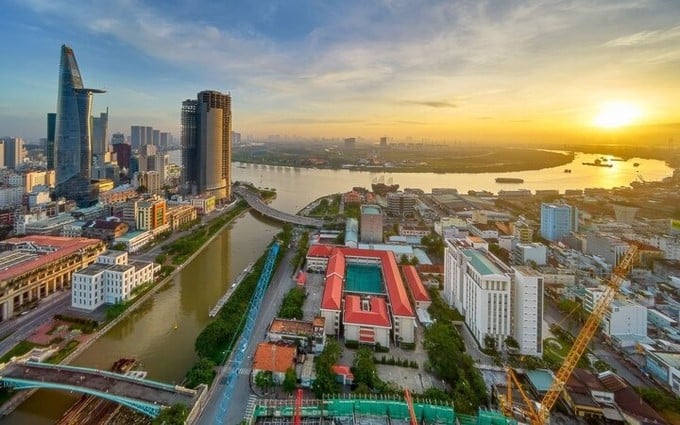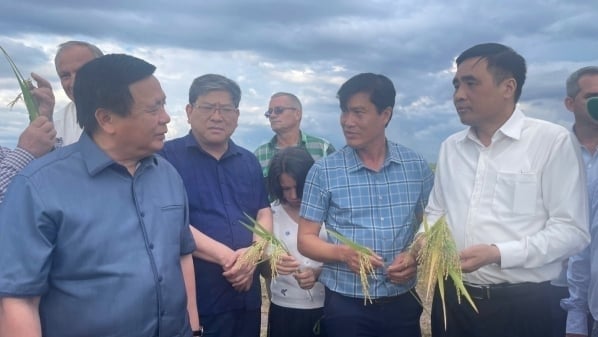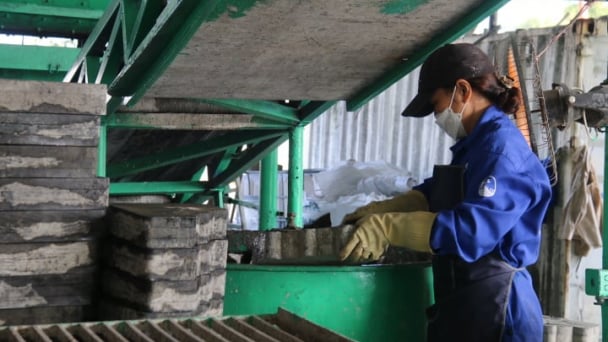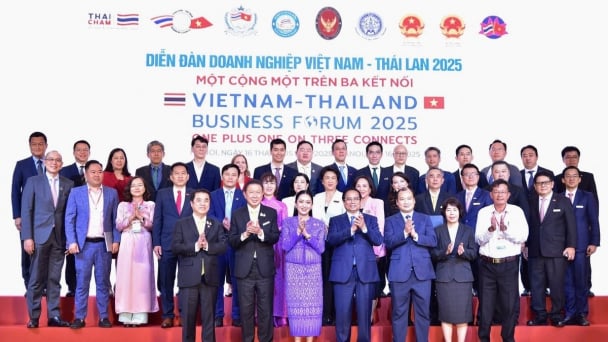May 18, 2025 | 13:17 GMT +7
May 18, 2025 | 13:17 GMT +7
Hotline: 0913.378.918
May 18, 2025 | 13:17 GMT +7
Hotline: 0913.378.918

The World Bank is optimistic about the economic development capability of East Asia.
The report updating the economic situation in the East Asia-Pacific region commented that recent trade tensions between the US and China have created opportunities for countries like Vietnam to strengthen their role in the global value chain by "connecting" with major trading partners.
"Vietnamese companies exporting to the US market saw revenue increase by nearly 25% compared to other markets in the 2018-2021 period," the report pointed out.
However, recent evidence leads the World Bank to predict that economies may be increasingly limited in playing a "one-way connection" role as new rules of origin and import-export restrictions are strictly applied.
China's neighboring countries have benefited from this country's strong growth over the past 30 years. However, the scale of this momentum tends to gradually decrease.
According to the World Bank, China has boosted other countries through importing goods, but import demand is now growing slower than GDP. Imports increased by only 2.8% in the first seven months of this year compared with nearly 6%/year in the previous decade.
The overall growth of the East Asia-Pacific region is forecast to reach 4.8% in 2024 but will slow down to 4.4% in 2025.
Growth of the region's largest economy, China, is forecast to decline from 4.8% this year to 4.3% in 2025 due to a prolonged weak real estate market, leading to low investor and consumer confidence. Besides it are structural challenges such as aging populations and global tensions.
Overall growth in the region, excluding China, is forecast to reach 4.7% in 2024 and 4.9% in 2025, thanks to increased domestic consumption, the recovery of goods exports, and increased tourism.
Among larger economies, only Indonesia is expected to grow in 2024 and 2025 at or above pre-pandemic levels. In contrast, growth in Vietnam, Malaysia, the Philippines, and Thailand is expected to be lower than before the pandemic.
Pacific island countries forecast growth at 3.5% in 2024 and 3.4% in 2025 as tourism recovers. At the same time, investment growth remains weak in many parts of the region.
Ms. Manuela Ferro, Vice President of the World Bank for the East Asia-Pacific region, acknowledged that the East Asia-Pacific region continues to be the growth dynamics for the world economy. However, the growth rate is slowing down.
"To maintain strong growth over the medium term, countries in the region must proactively modernize and reform their economies to adapt to shifting trade patterns and technological changes," she recommended.
The recently released report of the World Bank also points out three factors affecting growth in the region: trade and investment shifts, slowing growth in China, and increasing global policy instability.
Forecasting the coming time, the WB believes that global instability may negatively impact regional economies. In addition to geopolitical instability, increased economic policy uncertainties could reduce industrial production and stock prices in East Asia and the Pacific by 0.5% and 1%, respectively.
Industry, artificial intelligence, and digital platforms are transforming labor markets in the region. From 2018 to 2022, robot use has helped create jobs for about 2 million workers but also displaced about 1.4 million lower-skilled workers.
The proportion of jobs threatened by artificial intelligence is smaller than in advanced economies. However, Mr. Aaditya Mattoo, chief regional economist, commented: "East Asia's development model based on the open global market and labor-intensive production is being challenged by trade tensions and new technology. The best response is to take advantage of FTAs and equip the skills to take advantage of new technology."
Translated by Thu Huyen

(VAN) Deputy Minister Nguyen Quoc Tri also expressed his hope that Cuba will soon overcome its current challenges, attain food security, and further expand cooperation with Vietnam.

(VAN) The project contributes to enhancing the resilience of communities vulnerable to the impacts of climate change, with a primary focus on local women.

(VAN) Green materials help save energy and resources. However, after more than 10 years, Vietnam has only developed over 200 green buildings with more than 6 million square meters of floor space.

(VAN) Vietnam - Thailand Business Forum 2025: One plus one on three connects, marking a milestone in the comprehensive strategic partnership between the two nations.

(VAN) The United Nations designated 22 May as the International Day for Biodiversity 2025 with the theme 'Harmony with nature and sustainable development.'
![Multi-channel, multi-directional Vietnamese agricultural markets: [8] A national strategy is needed](https://t.ex-cdn.com/nongnghiepmoitruong.vn/608w/files/phucpm/2025/05/15/1435-thi-truong-nong-san-viet-da-kenh-da-huongbai-8-can-mot-chien-luoc-quoc-gia-084750_728.jpg)
(VAN) The Chairman of Hung Nhon Group shared: ‘Opening up and tapping into new markets is the right and strategic direction for Vietnam's agricultural sector.’

(VAN) Food waste has become a serious issue in modern society, especially in rapidly urbanizing and developing cities like Hanoi.